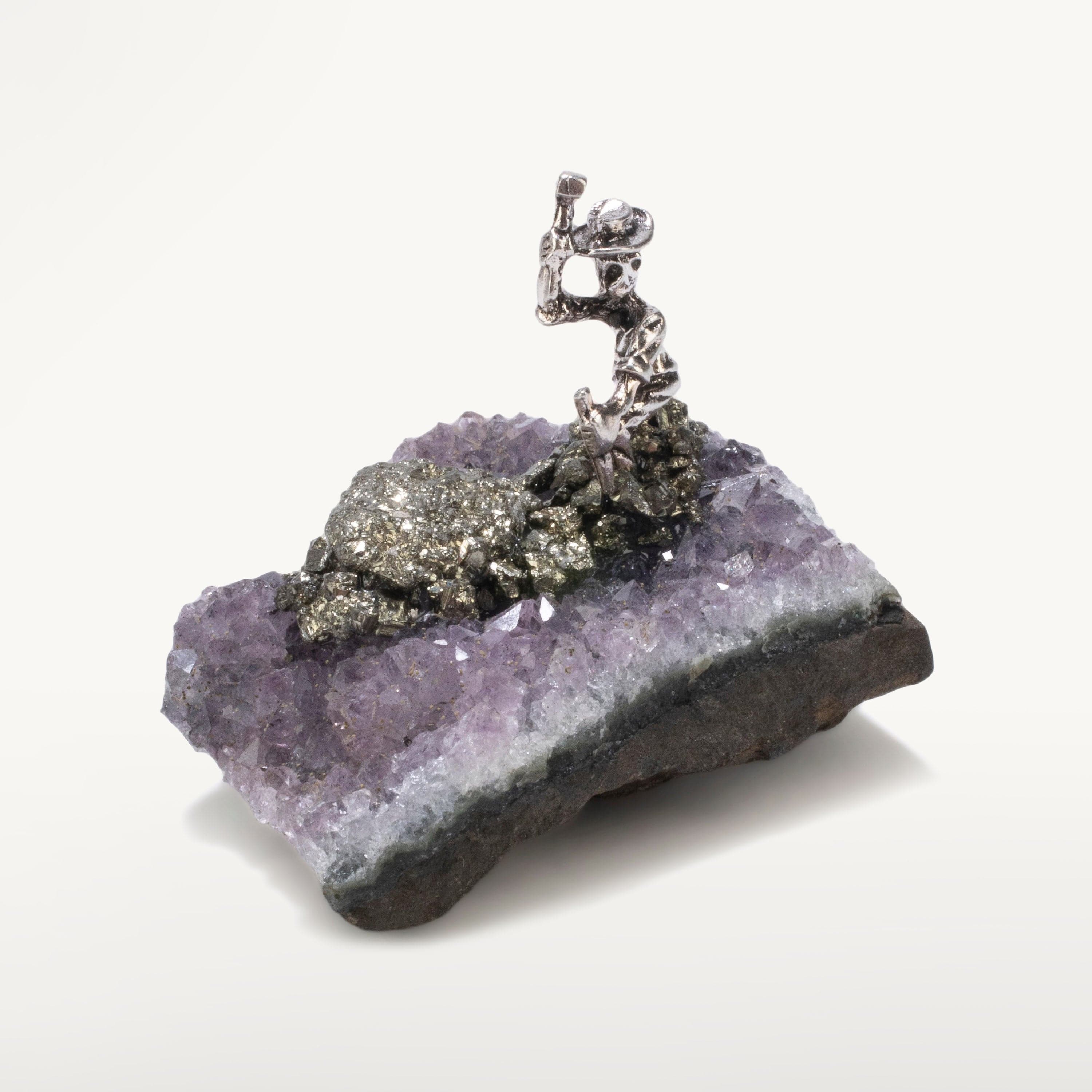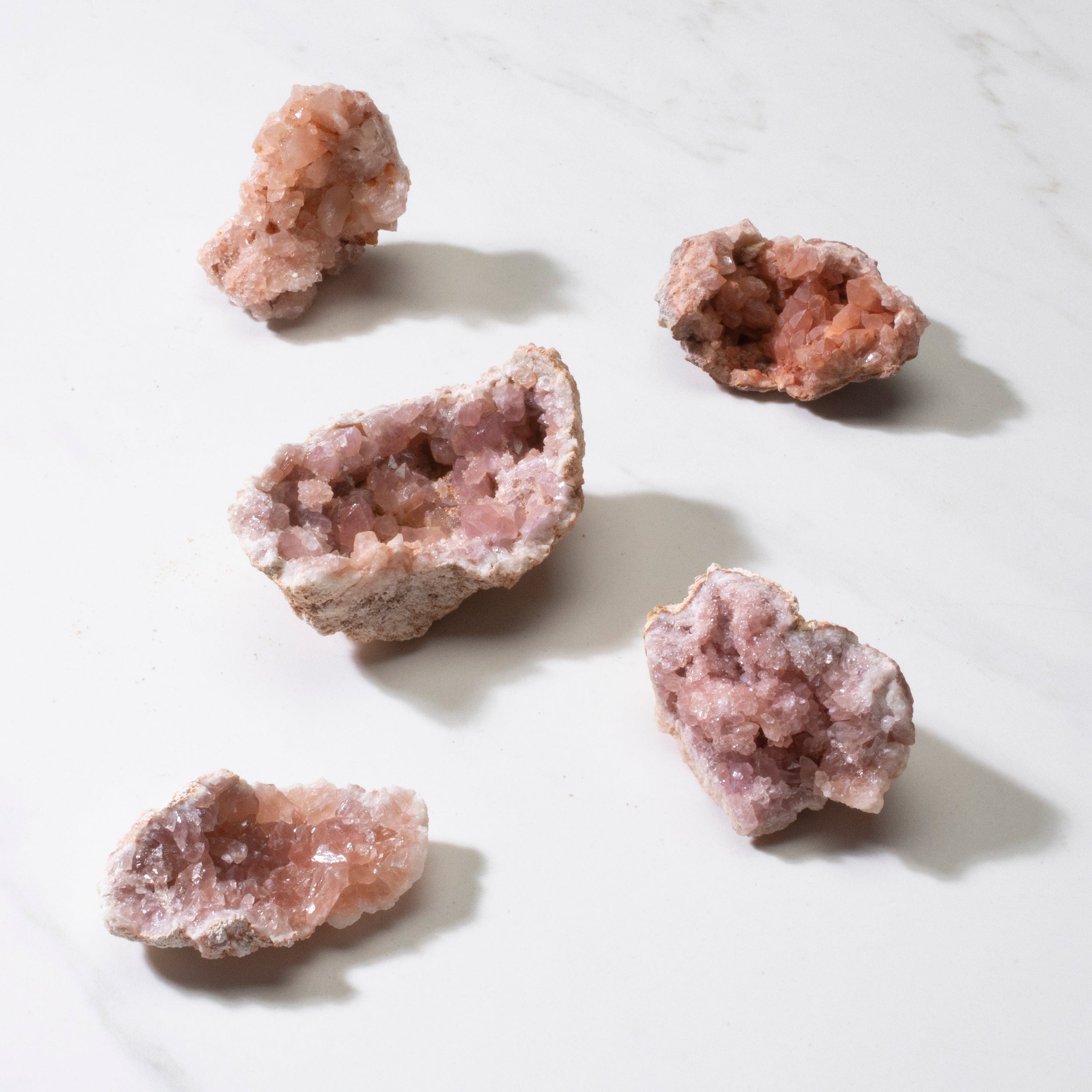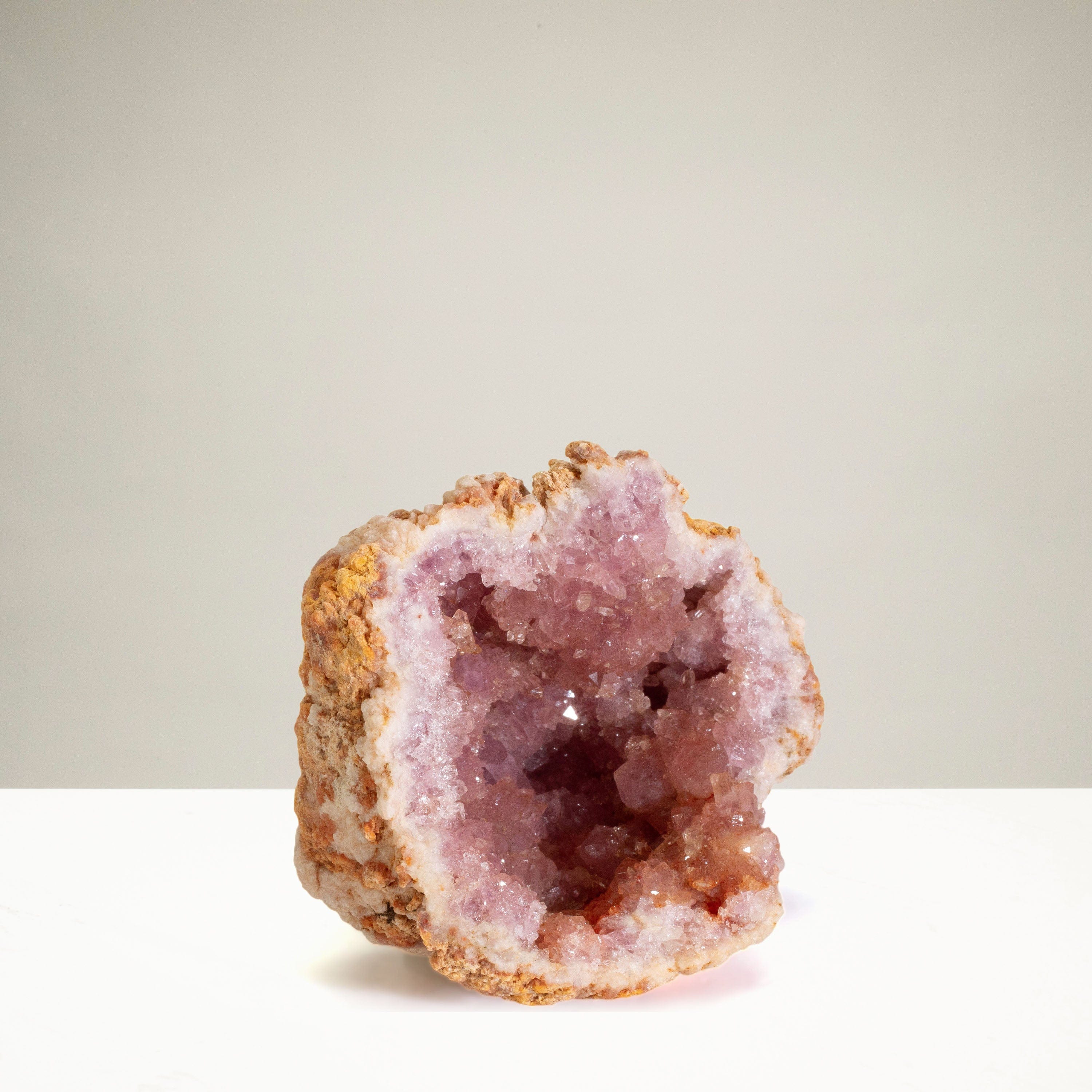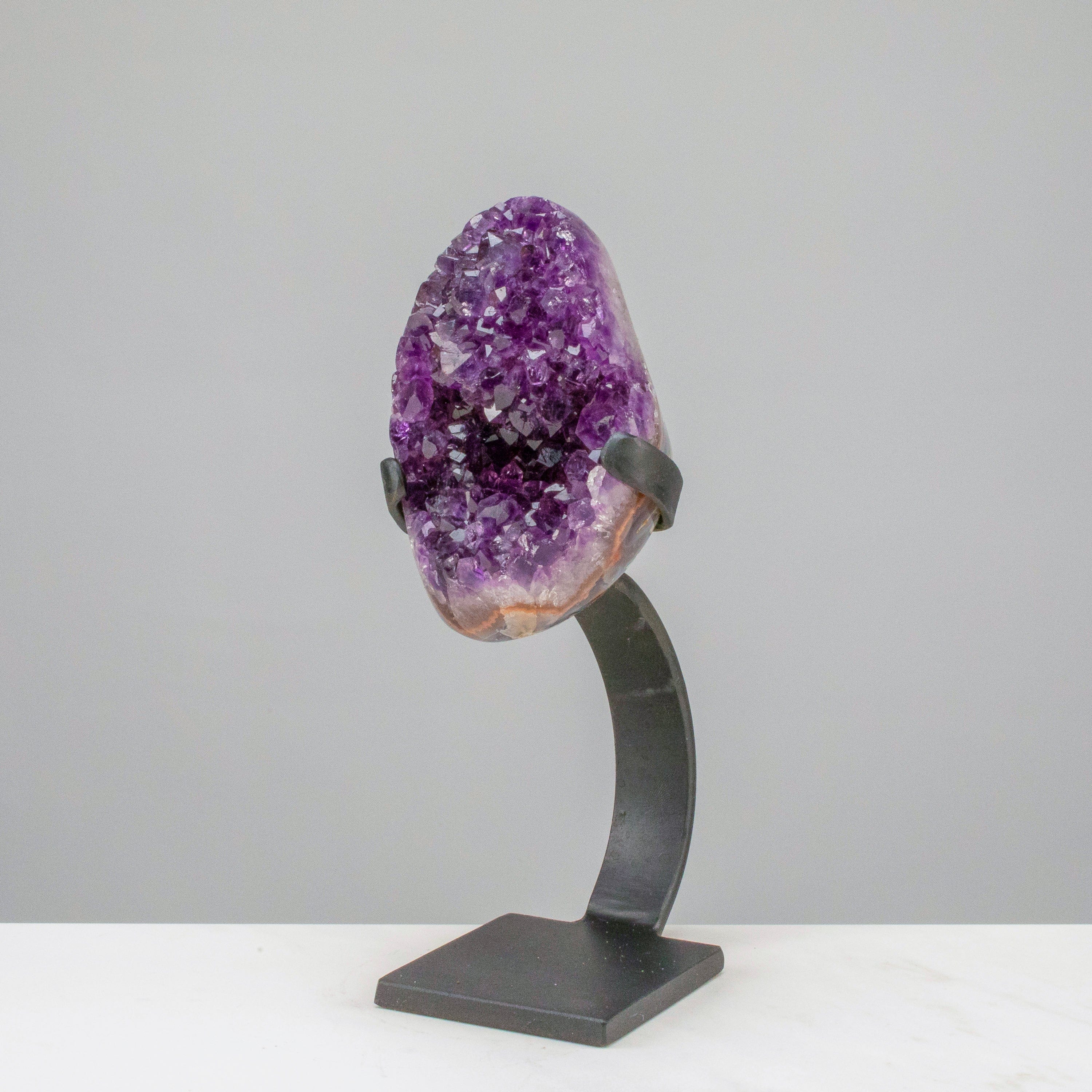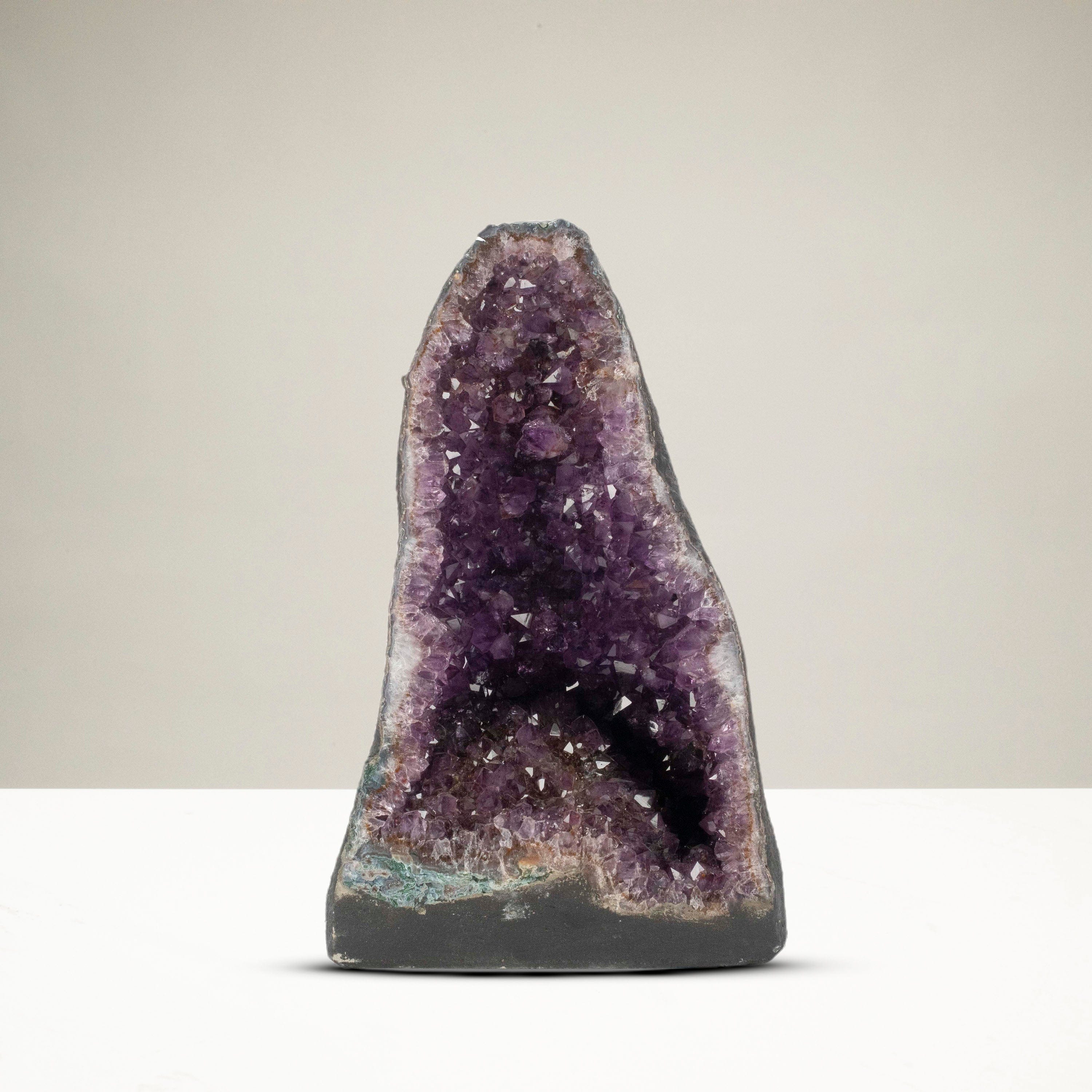Article: Amethsyt

Amethsyt
Amethyst, a gem known for its exquisite purple hue and mystical allure, has captivated humans for centuries. But have you ever wondered how this regal stone, a variety of quartz, is formed? The story of amethyst's creation is a fascinating journey that takes us deep within the Earth's crust.
Amethyst's distinctive violet coloration is the result of iron impurities in its crystal structure. As quartz crystals grow, some silicon atoms are replaced by iron atoms, which subsequently give rise to the gem's striking purple hue. This process of formation can occur in various geological settings, but amethyst is most commonly found within the voids of volcanic rocks, where it develops as a result of hydrothermal processes. Underground fluids rich in silicon and iron seep through cavities and fissures, slowly depositing quartz and creating the intricate crystal structures that make amethyst so cherished.
What makes amethyst's formation even more intriguing is that it can be influenced by external factors such as temperature, pressure, and the presence of other minerals. These variables contribute to the diversity of amethyst's shades, from deep violet to pale lavender. Over time, this gem has been linked to qualities such as clarity of mind and inner strength, making it not only a geological wonder but a cherished symbol of spiritual and emotional balance. Whether you admire it for its natural beauty or its metaphysical properties, amethyst's formation is a reminder of the Earth's incredible capacity to create wonders beneath its surface.
Amethyst's distinctive violet coloration is the result of iron impurities in its crystal structure. As quartz crystals grow, some silicon atoms are replaced by iron atoms, which subsequently give rise to the gem's striking purple hue. This process of formation can occur in various geological settings, but amethyst is most commonly found within the voids of volcanic rocks, where it develops as a result of hydrothermal processes. Underground fluids rich in silicon and iron seep through cavities and fissures, slowly depositing quartz and creating the intricate crystal structures that make amethyst so cherished.
What makes amethyst's formation even more intriguing is that it can be influenced by external factors such as temperature, pressure, and the presence of other minerals. These variables contribute to the diversity of amethyst's shades, from deep violet to pale lavender. Over time, this gem has been linked to qualities such as clarity of mind and inner strength, making it not only a geological wonder but a cherished symbol of spiritual and emotional balance. Whether you admire it for its natural beauty or its metaphysical properties, amethyst's formation is a reminder of the Earth's incredible capacity to create wonders beneath its surface.
Shop our Amethyst collection
Angel Aura Borealis Amethyst Geode Cluster
Sale price$15.00
Pyrite Miner on Brazilian Amethyst Geode
Sale price$20.00
Pink Amethyst Geode
Sale price$22.00
Medium Uruguayan Amethyst Geode on Custom Stand - 9"/ 4 lbs - AAA Grade
Sale price$300.00
Small Uruguayan Amethyst Geode on Custom Stand - 8"/ 2.5 lbs - B Grade
Sale price$125.00
Small Uruguayan Amethyst Geode on Custom Stand - 8"/ 2.5 lbs - AAA Grade
Sale price$200.00
Amethyst Geode Cathedral - 19" / 59 lbs
Sale price$2,400.00


